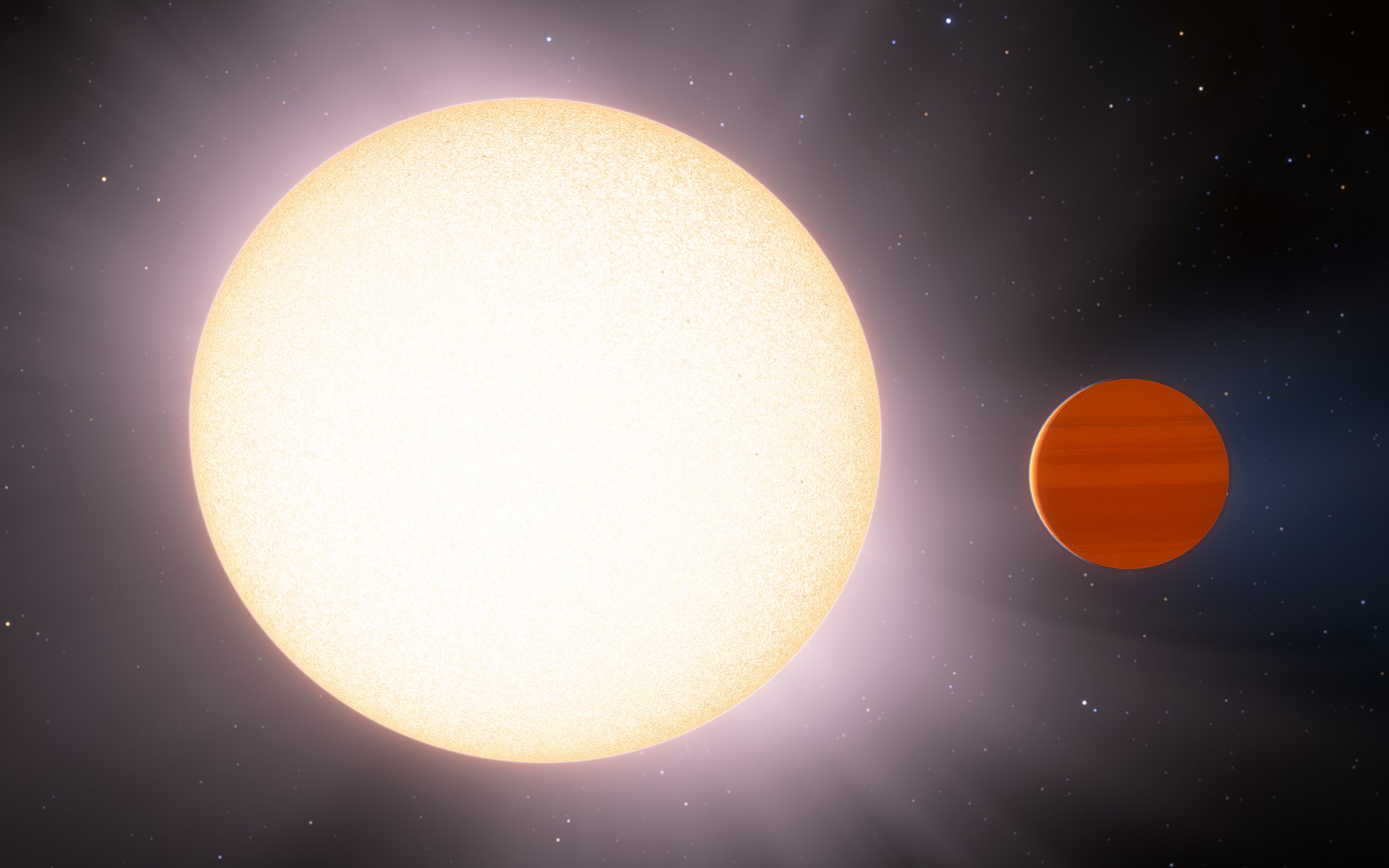WASP-121b is a gas giant that is 1.87 times larger than Jupiter and 1.18 times more massive. Discovered in 2016, this exoplanet orbits its parent F6-type star, WASP-121, in just 1.3 days. This type of exoplanet is also called “hot Jupiters”.

WASP-121b is so close to the star that further approach would cause it to be torn apart by gravity. According to astronomers, the temperature on the planet reaches 2,500 degrees Celsius. At such temperatures, most solids melt.
Scientists from the California Institute of Technology, in particular researcher Jack Skinner and his colleagues, analyzed the observations of WASP-121b carried out by Hubble in 2016, 2018 and 2019. They found that the planet’s atmosphere is dynamic and changes over time.
Using sophisticated modeling techniques, the researchers explained these changes as a result of weather events in the atmosphere of the exoplanet. This was how massive weather fronts, storms and cyclones were discovered. They appear and collapse due to the large temperature difference between the side facing the star and the dark side of the planet.
The authors also found a shift between the hottest point of the exoplanet and the point closest to the star, as well as changes in the chemical composition of the atmosphere measured by spectroscopy. These findings are based on computer models that help explain the observed changes in the atmosphere.
“Studying exoplanets’ weather is vital to understanding the complexity of exoplanet atmospheres on other worlds, especially in the search for exoplanets with habitable conditions. The information that we extracted from those observations was used to infer the chemistry, temperature, and clouds of the atmosphere of WASP-121b at different times. This provided us with an exquisite picture of the planet changing over time,” Jack Skinner explains the significance of the discovery.
According to sci.news
Follow us on Twitter to get the most interesting space news in time
https://twitter.com/ust_magazine


